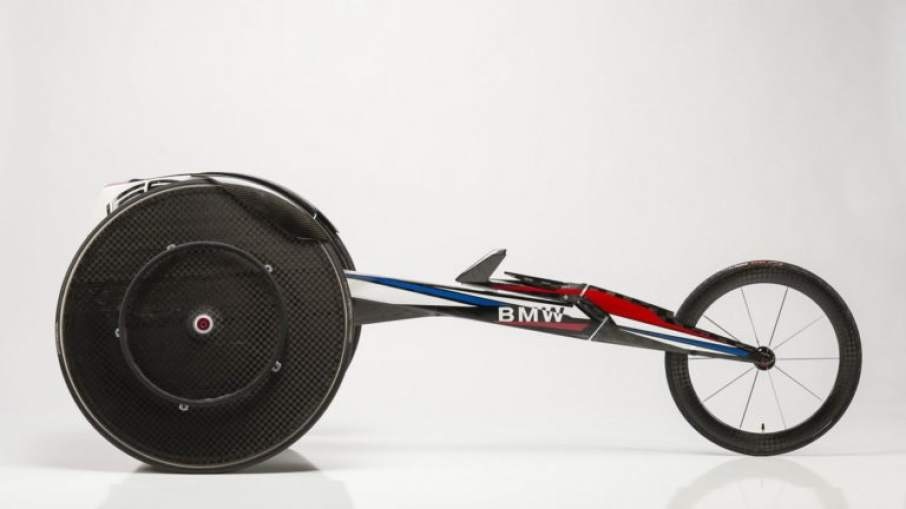Aug 5 2016
 (Credit: 3D Printing Industry)
(Credit: 3D Printing Industry)
The new 3D printed wheelchairs designed by BMW Designworks for the US Paralympic Track and Field team were revealed in a new TV advertisement.
BMW-owned creative consultancy, DesignworksUSA, is the Official Mobility Partner of the US Olympic Committee. It helped the team to customize each individual chair to match the specific athlete to help them perform their best in Rio de Janeiro.
World Champion, world record holder, and winner of five Paralympic medals and numerous international marathons, Josh George competes in several T53 events, ranging from sprints to marathons. He is a motivational speaker, and has given his views on how the new 3D printed wheelchair would make a difference for him in his latest campaign.
Video Source: BMW USA/Youtube.com
From the Winter Games to the Paralympics
During the 2014 Winter Olympics in Sochi, BMW’s consultancy worked with the US bobsled team. Using additive manufacturing the lightweight, streamlined sled that was built by them helped the bobsled team win three medals. Now the company is focused on designing wheelchairs for the Paralympic squad.
The Paralympics includes a vast range of sporting events such as road racing, basketball and fencing. Each sport has its own requirements for the chairs that the athletes use. This would mean that 3D printing will have a significant impact on the games in the years to come.
In this year’s games, cyclist Denise Schindler will be using a 3D printed leg, and now the US team will be using the wheelchairs. Although the exterior of the 3D printed wheelchairs may look similar to its conventionally manufactured counterparts, under the skin they are absolutely different.
A 3D Printed Aerodynamic Advantage
Designworks obtained 3D scans of the athletes in their respective chairs. Then 3D models were created. The company involved the athlete in the procedure, and together they were able to fine tune the aerodynamics.
The 3D modeling process helped the team discover a method to minimize drag by up to 15% with a number of minor alterations to the frame and the user’s position.
It’s not necessarily a revolution for these guys, but you want to give them every little edge. If they’re pushing into a headwind, or they hit a hill at 45 miles per hour, at those points, they’re in a tucked position trying to get as much speed as they can.
Brad Cracchiola, Associate Director, Designworks USA
Comfort is the Key
To achieve the best performance, the comfort of the athlete is important. This redesign aimed to customize the chairs to suit the athlete so that they were comfortable.
The athlete could depend on their chair to provide the same level of comfort every single time, so that they could focus solely on their performance.
There’s an interesting psychology to this. The comfort of your equipment, the repeatability, when you have that mold, you know how it’s going to feel every time. That’s one less thing for the athlete to think about.
Brad Cracchiola, Associate Director, Designworks USA
Carbon Fiber can make a Difference
The wheelchairs were printed using carbon fiber as it is lighter than aluminum and also offers better torsional rigidity and stiffness. The reduced flex in the frame allows more of the power the athlete puts through wheels to go into forward motion.
Over the course of a long event, it is important to maintain the alignment of wheels perfectly and to prevent shocks from going through the frame – this would translate into victory or loss for an athlete.
The rapid prototyping aspect would enable the designers to print a number of options that the athletes can try out in real world conditions to finally decide on the ideal solution.